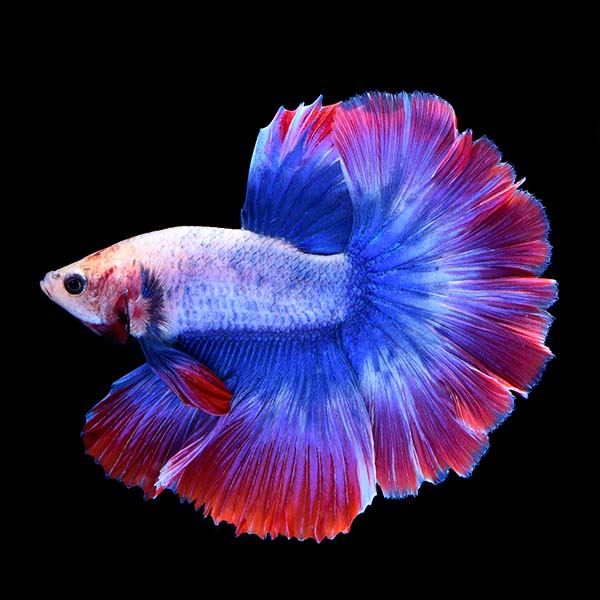Just How to Breed Betta Fish Effectively: Specialist Methods and Insights for Hobbyists Looking to Increase Their Betta Collection
Reproducing Betta fish requires a nuanced understanding of genetics and ecological problems, making it vital for hobbyists to approach the procedure with both persistance and care. Producing an optimum reproduction atmosphere, choosing the right sets, and observing the ins and outs of their courtship habits are foundational steps that can significantly affect the outcome.
Recognizing Betta Fish Genetics
Recognizing the genetics of Betta fish is critical for effective reproduction, as it influences characteristics such as color, fin form, and behavior. Betta fish display a diverse variety of shades and patterns, mainly established by their hereditary makeup. The primary genes responsible for coloration consist of the "B" gene for blue, "D" gene for red, and the "C" gene for shade strength. Breeders can manipulate these characteristics by picking certain moms and dad fish that show wanted features.
In enhancement to coloration, fin morphology is another substantial element of Betta genetics (betta fish). The form and size of fins are influenced by numerous genetics, including those that establish whether the fins are short, long, or veil-shaped. Recognizing these genetic variations assists dog breeders predict the phenotypic end results of their children
Moreover, behavioral attributes such as aggression and territoriality can also be affected by genes. These behaviors play a vital role in the breeding process, as they can affect spawning success and the total temperament of the resulting fry. By adequately understanding these hereditary principles, dog breeders can make informed choices, inevitably improving their breeding programs and accomplishing preferable outcomes.
Preparing the Reproduction Atmosphere
Developing an ideal reproduction environment is essential for the effective reproduction of Betta fish. The very first action in preparing this setting is to pick a suitable breeding container, ideally varying from 5 to 10 gallons.
Following, think about the use of a sponge filter or an air stone to supply gentle water circulation without creating solid currents that can stress the fish. It is vital to set up plants or breeding cones to use hiding areas and promote convenience for the lady during the spawning procedure. Drifting plants, such as Java moss or water sprite, can also develop a much more natural atmosphere while promoting bubble nest building by the man.
Before presenting the reproducing sets, make sure the water is conditioned and without hazardous chemicals, such as chlorine or hefty steels. betta fish. Routine water modifications ought to be carried out to keep optimum water quality, improving the possibilities of effective breeding. With these preparations in position, the breeding setting will sustain the health and health of both Betta fish
Choosing Reproduction Pairs
Selecting the best breeding pairs is critical for accomplishing successful Betta fish recreation. When choosing your reproduction sets, think about several key factors including wellness, character, and genes. Healthy Betta fish display vibrant colors, clear eyes, and active habits. Selecting fish that are without condition ensures a better opportunity of creating practical children.
Personality is another crucial factor to consider, as Betta fish Find Out More are understood for their hostile nature. It is a good idea to select a male and woman that show compatible temperaments you can try this out to decrease tension throughout the reproducing procedure. A tranquil man can encourage a smoother courtship, while a lady that is too aggressive may disrupt the procedure.
Genetic history additionally plays a significant duty in the top quality of the spawn. Breeding fish that are genetically diverse can reduce the risk of genetic health problems and boost the total vitality of the fry. It is helpful to research the lineage of both the male and female, concentrating on preferable traits such as fin type, shade patterns, and dimension.
The Reproduction Process
The reproduction process of Betta fish calls for careful planning and focus to information to guarantee an effective end result. At first, it is important to prepare an ideal breeding container, ideally a 5-10 gallon fish tank with a temperature level maintained at 78-80 ° F. The tank should be equipped with a heating unit, filter (preferably sponge type to avoid strong currents), and a lot of aquatic plants for the female to hide.
When the environment is set, introduce the chosen breeding pair to the container, enabling them to accustom. Observe their actions; the male will certainly show fancy courtship routines, including flaring his fins and constructing a bubble nest. If the female shows interest, she will certainly show vertical stripes showing readiness for spawning.
When the female is receptive, the pair will engage in a mating accept, throughout which the male feeds the eggs. Preserving optimal water conditions during this period is crucial for the development of healthy and balanced Betta fry.
Caring for Betta Fry

Feeding Betta fry is vital, as they need a diet regimen high in healthy protein. At first, they can be fed infusoria or fluid fry food, transitioning to finely crushed top quality pellets as they expand. Feed small portions numerous times a day to urge healthy and balanced development without overloading the storage tank with uneaten food.

As they mature, check their development closely and separate any type of hostile individuals to avoid injury. By supplying a supporting atmosphere and proper nourishment, enthusiasts can effectively raise Betta fry right into dynamic, healthy fish, eventually improving their breeding endeavors.
Conclusion
Effective Betta fish reproduction needs thorough focus to hereditary option, ecological problems, and treatment for the fry. By recognizing the genes of Betta fish and preparing an appropriate breeding environment, hobbyists can enhance the chances of producing vibrant, healthy offspring.